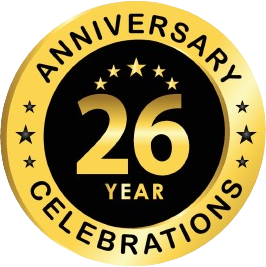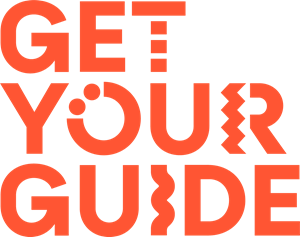If you’re planning a trek in Nepal, staying in the local tea houses in Nepal will be one of the most memorable and rewarding parts of your journey.
What are Tea Houses in Nepal?
Basically, a tea house is a small, family-run guesthouse that provides trekkers with a place to sleep, eat, and rest during your trekking journey in Nepal. Tea houses are found along every trekking route, including popular trails like Everest, Annapurna, and Langtang, offering unique experiences in each region. These tea houses are common in remote areas where hotels are rare. They are an essential part of the trekking infrastructure, offering a simple and cost-effective solution for trekkers looking for shelter in the mountains.
What to Expect from Nepal Tea Houses?
As you move higher up into the mountains, the facilities in tea house accommodation in Nepal decrease and become more basic—from toilets to showers, private to shared rooms, and even the dining area. The tea house facilities during treks are limited due to the remote locations, lack of infrastructure, and challenges in transporting supplies.
Dining / Communal Area
Every tea house has a large communal dining area with a wood-burning stove at the center, providing typical meals during your trek in tea houses in Nepal. Trekkers gather here to enjoy their meals, sip warm tea, share stories, laugh, sing, and create a warm, friendly atmosphere while eating and connecting. When the season is at its peak and tea houses are overcrowded, trekkers often have to sleep in the dining area on extra cots, mats, or tables provided by the owners.
Private and Shared Rooms
Normally, the rooms in tea houses in Nepal have two single beds, though some may have two to three twin beds, each with one pillow and a blanket. Private rooms are rarely available because the rooms are small, typically designed to fit two beds. They are divided by wood or plywood, so sounds easily travel from one room to another. We recommend trekkers to put a cover over the pillow and bring their trekking bags along to maintain hygiene during their stay.
We try our best to reserve single rooms for travelers who request them. However, during busy times when the trail is crowded, tea house managers may ask trekkers to share rooms to save space. While it's not ideal, it's a common situation on the trail since tea houses are limited, and everyone needs a place to sleep.
Toilets and Showers
Tea houses mainly have traditional squat toilets, and western-style sit-down toilets are rarely found. You never know which type you'll get in your trekking area. Some toilets have a flush, while others use a tap and bucket to fill water for flushing. Make sure to bring toilet paper, handwash, and sanitizer, as these are not always provided.
As for showers, some tea houses offer hot water, but it may be more expensive than cold water. Hot water and showers become scarcer as you ascend in altitude. In more remote tea houses, you can pay for a pot of hot water to wash yourself. We recommend bringing your own personal hygiene items for convenience.
Electricity and Wi-Fi
Most tea houses primarily run on solar power, providing basic electricity for lighting and central plug points in the communal dining area to charge mobile phones and tablets. However, there is usually a fee for charging your devices. Since the electricity is generated from solar energy, it is limited and used carefully. The power needs to be conserved during cloudy days, and you can expect occasional electricity outages, especially due to wind or bad weather conditions, which is common during trekking stays in Nepal.
We recommend bringing power banks and headlamps to ensure you have a reliable power source and sufficient lighting, especially in areas where electricity may be limited or unavailable.
As for the Wi-Fi, some tea houses offer it for free, while others charge a fee. Generally, the Wi-Fi may be slow due to limited bandwidth, high demand, or the remote location of the tea houses.
Food and Drinks
The name "tea house" itself reflects the importance of tea, as it’s the first thing you'll be greeted with upon arrival. Tea house stays during Nepal trekking offer a warm cup of tea as a comforting way to unwind and recharge, whether you're trekking through wind, cold, rain, or snow.
Meals in tea houses in Nepal are often cooked over a fire in the kitchen, adding a traditional touch to the experience. After a long day of trekking, a perfect plate of dal, bhat, tarkari, and salad is the best way to satisfy your hunger and relax, providing both warmth and nourishment.
Breakfast:
- Tea, coffee, vegetable soup, hot lemon & juice
- Eggs (boiled, scrambled, fried,omelets and pouch)
- Bread/Toast with butter/jam/honey
- Tibetan bread, chapati, muesli porridge
- Pancakes
- Noodles
Lunch & Dinner:
- Chowmein, pasta, fried rice
- Dal, bhat, tarkari & salad
- Chips, potato fries, popcorn
- Sandwiches & soup
- Spring rolls
- Dessert (rice pudding, apple or banana fritters, chocolate pudding)
- Chapati & aalu soyabean tarkari
The local dish of Nepal is dal and bhat, which is commonly served at tea houses during trekking. While most tea houses offer vegetarian food, non-vegetarian options are also available upon request, though they can be more expensive. At times, when the tea house staff is unavailable or there are many trekkers, guides and porters often step in to help prepare meals for hungry trekkers after a long day on the trail.
Tea House Trekking Vs. Camping in Nepal
Tea house trekking and camping in Nepal offer different experiences. Tea house trekking is more comfortable and convenient, providing warm meals, shelter, and rest without the need to set up camp. On the other hand, camping requires more preparation—trekkers must carry gear, set up tents, and cook their food. While camping offers more freedom, tea house trekking offers a simpler and more relaxed experience, especially in Nepal's remote regions. Trekking in Nepal with tea house lodging provides more comfort than camping in Nepal.
How Much Does it Cost to Stay in Tea Houses in Nepal?
A night at a tea house in Nepal costs between $5–$10, but prices can vary depending on the season, location, and time of year.
Factors That Affects the Price
- Season: Prices are higher during peak season and more negotiable during off-season
- Location: Tea houses in the Everest region are generally more expensive than those in the Annapurna or Langtang regions
- Altitude: Accommodation facilities become more basic as you move higher into the Himalayas
What's included
- Rooms: A room having two beds, mattresses, pillows, and blankets
- Food: Tea houses offer a variety of food options, including traditional Nepalese dishes, international cuisine, and beverages like tea and coffee
- Amenities: Some tea houses offer hot showers, toilets, and Wi-Fi or other internet services
Cultural Etiquette to Expect During Your Stay at Tea Houses
Some cultural etiquette in tea houses includes:
- Respecting local customs- Greet the hosts and fellow trekkers politely.
- Removing shoes- Always remove your shoes before entering the dining area or rooms.
- Sharing space- Be mindful of shared spaces and consider others’ privacy.
- Punctuality- Be on time for meals and activities.
- Offering food- It’s polite to offer your food or tea to others, especially locals.
- Respecting quiet hours- Keep noise levels down, particularly at night.
These small gestures ensure a respectful and enjoyable experience for both trekkers and hosts.
Top Tips While Trekking in Nepal Tea Houses
Tea houses are a memorable part of your trekking experience in Nepal, offering heart-welcoming hospitality that reflects the local culture and makes your journey even more special.
Here are some tea house trek tips for staying in tea houses in Nepal:
- Book early - Reserve rooms during peak seasons to avoid last-time stress over meals and room facilities.
- Carry Cash - Most tea houses in trekking regions do not accept cards, so having enough Nepali rupees is essential.
- Bring essentials - Carry a sleeping bag, toilet bag, sanitizer, power banks and comfy sandals.
- Charge devices wisely - Charging electronics may cost extra and could be limited. Use power banks to stay charged.
- Be Patient - During peak seasons, tea houses may get crowded. Staff work hard, so a little patience goes a long way.
- Be Prepared - Expect basic facilities and occasional power of Wi-Fi outages.
- Support Locals - Purchase meals and drinks from the tea houses to contribute to the community.
Why are Tea Houses in Nepal so Special?
Tea houses in Nepal are special because they are the only places along the trails where you can take shelter, rest, and enjoy local food. They not only provide food and shelter; they also offer a glimpse into Nepal's warm hospitality and local culture. Along the trails, these cozy spots bring trekkers together, creating a sense of community. Trekkers share stories over meals and tea. Tea house owners welcome you with kindness and treat you like family. They serve breakfasts and delicious dinners. They also provide comfortable rooms with blankets and pillows, making you feel at home in the mountains.
The kind gestures of tea house owners make the experience even more memorable. Their simplicity, charm, and connection to the surrounding mountains make them an unforgettable part of trekking. These tea houses add to the overall journey. It’s not just a place to rest but it’s a true experience of Nepalese hospitality and the beauty of the trails.
Conclusion
Tea houses in Nepal are an essential part of the trekking experience. It’s a simple guesthouse or lodge found along the trekking routes. These tea houses offer food, shelter, and rest for trekkers. They served traditional meals and a chance for trekkers to relax after a long day on the trail. They provide feelings of warmth and comfort for trekkers. The kindness and hospitality of tea house owners make trekkers feel at home. In the rugged mountains, these tea houses provide a sense of security, rest, and peace which makes the journey enjoyable and memorable.
Author: Pranesh Maharjan
Date: 11th December, 2024





















